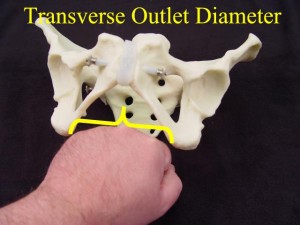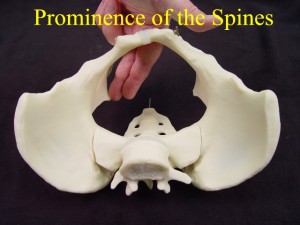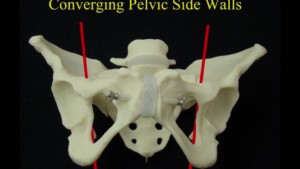Even if highly accurate measurements of the maternal pelvis and fetal size were possible (and they are not), it would still be difficult to predict in advance those who will deliver vaginally easily and those who will not.
All measurements are essentially static, and do not take into account the inherent “stretchiness” of the maternal pelvis or the compressibility of the fetus.
The pelvis is not a single solid bone, but is comprised of many bones, held together by cartilage and ligaments. During pregnancy, these soft-tissue attachments become more pliable and elastic, allowing considerable movement. Similarly, fetal tissues can be safely compressed, to a certain extent.
For these reasons, trying to predict whether a dynamically-shaped fetus will fit through a dynamically-shaped pelvis, based only on static measurements, becomes nearly impossible. Can a basketball fit through a rubber band? Of course, it depends on how big the basketball is, how big the rubber band is, how inflated the basketball is, and how stretchy the rubber band is. Accurate measurement of the size of the basketball and the rubber band won’t answer all of those questions.
Clinical Pelvimetry
Methods of performing clinical pelvimetry range from the very simple to very complex. Simple digital evaluation of the pelvis, allows the examiner to categorize it as probably adequate for an average sized baby, borderline, or contracted.
A more detailed examination is best performed late in pregnancy, when the tissues are stretchy and pliable.
Measuring the Diagonal Conjugate.
Insert two fingers into the vagina until they reach the sacral promontory. The distance from the sacral promontory to the exterior portion of the symphysis is the diagonal conjugate and should be greater than 11.5 cm.

Measuring the Bony Outlet
Measure the bony outlet by pressing your closed fist against the perineum. Compare the previously-measured diameter of your fist to the palpable distance between the ischial tuberosities. Greater than 8 cm bituberous (or bi-ischial, or transverse outlet) is considered normal.

Determine the Prominence of the Ischial Spines
Feel the ischial spines for their relative prominence or flatness. Spinal prominence narrows the transverse diameter of the pelvis.

Feel the Pelvic Sidewalls
Feel the pelvic sidewalls to determine whether they are parallel (OK), diverging (even better), or converging (bad). True outlet obstruction is fortunately rare.

